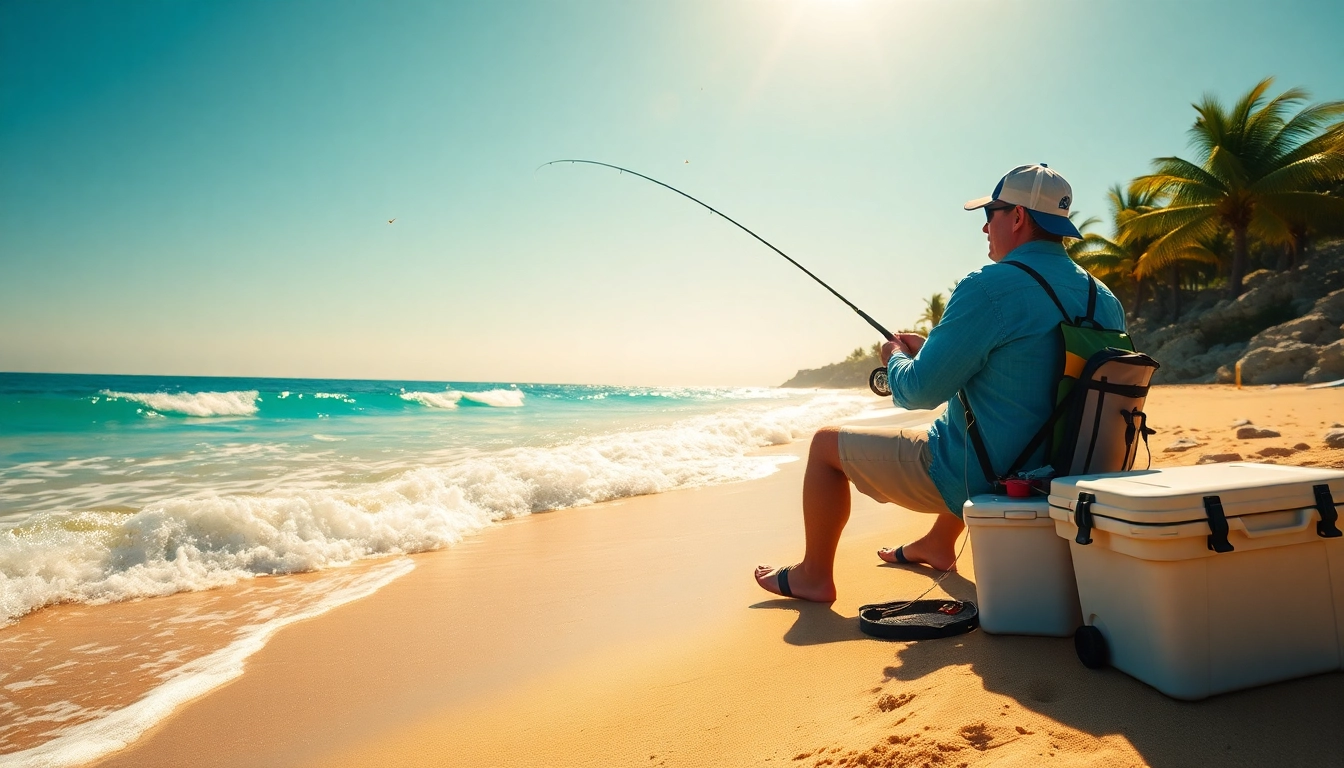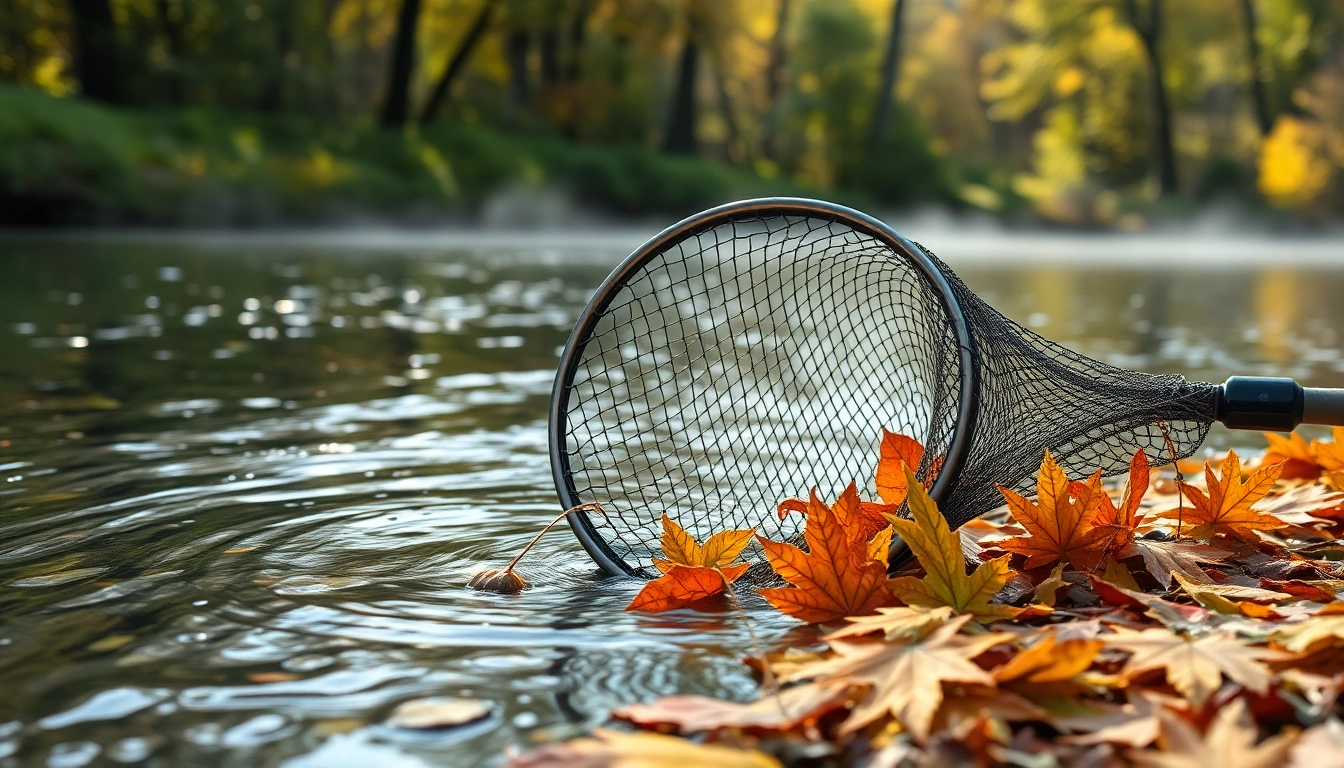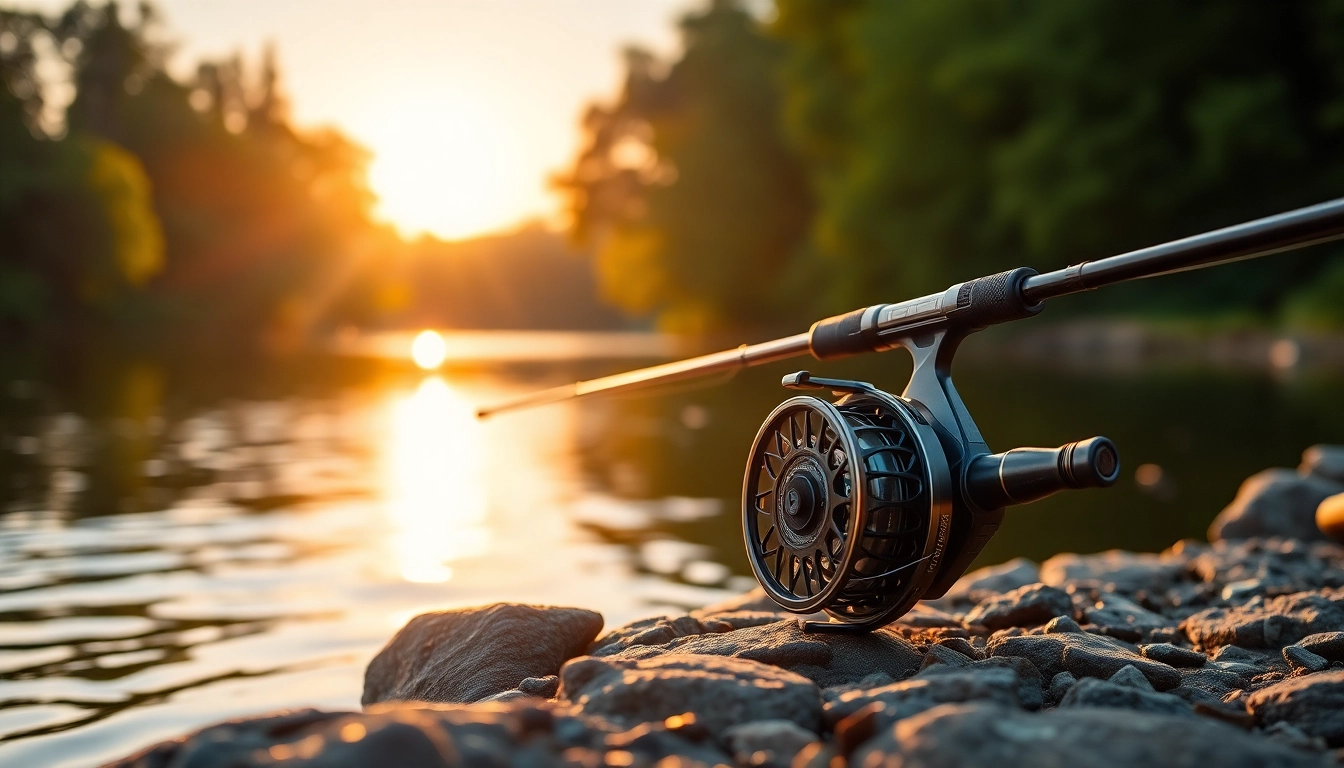Mastering Saltwater Fly Fishing: Techniques, Tips, and Gear for Success
Understanding Saltwater Fly Fishing Basics
Saltwater fly fishing presents a unique challenge that blends strategy, skills, and the love of the outdoors. For enthusiasts, it’s not just about casting a line; it’s a pursuit that involves understanding the behavior of various species and mastering the gear that makes this sport so exhilarating. Whether you’re a novice considering your first outing or an experienced angler looking to refine your techniques, gaining a foundation in the essentials of Saltwater fly fishing is crucial.
What is Saltwater Fly Fishing?
Saltwater fly fishing is a method of catching saltwater fish using artificial flies. Unlike traditional fishing methods that often rely on spinning reels and live bait, this technique involves casting lightweight, imitation flies that are designed to mimic specific prey fish or aquatic insects. With a fly rod, you can target various species in oceans, estuaries, and along coastal shorelines.
Types of Saltwater Fish Targeted
Saltwater fly fishing opens the door to a host of exciting species. Some of the most popular targets include:
- Bonefish: Known for their speed and elusive nature, bonefish are a favorite among fly anglers. Found in shallow waters, they require stealthy approaches and well-timed casts.
- Tarpon: Often referred to as the “silver king,” tarpon are famous for their acrobatic jumps and size. Targeting tarpon involves understanding their feeding patterns and preferred habitats.
- Permit: Highly sought after but challenging to catch, permit demand precision and knowledge of their feeding behaviors.
- Striped Bass: A popular species in many areas, striped bass are commonly found near the surf and are known for their aggressive feeding.
- Redfish: These fish are abundant in coastal waters and are well-regarded for their strong fights.
Essential Gear for Saltwater Fly Fishing
Equipping oneself adequately is vital for a successful saltwater fly fishing experience. Key gear includes:
- Fly Rod: Choose a rod that matches the conditions you’ll be fishing in—lighter for shallow waters and heavier for deeper fishing waters.
- Reel: A dependable saltwater reel is crucial. It should be corrosion-resistant and able to handle the strains of large fish.
- Line: The fly line’s weight should correspond with your rod. A floating line is generally used for surface fishing, while sink-tip or sinking lines can be beneficial for deeper waters.
- Flies: Use various flies that replicate local bait fish species. Clouser Minnows, deceivers, and crab patterns are often effective.
- Leader and Tippet: These materials connect your fly to the line and should be chosen for their strength and visibility in the water.
Preparing for Your Saltwater Fly Fishing Adventure
Best Locations for Saltwater Fly Fishing
The thrill of saltwater fly fishing often lies in the diverse habitats you can access. Some popular locations include:
- Shallow Flats: These areas are ideal for targeting species like bonefish and permit. Low visibility conditions can aid in stealthy approaches.
- Estuaries: The mix of freshwater and saltwater creates rich ecosystems that attract varied species. Fishing mangrove edges can yield high rewards.
- Coastal Surf: Striped bass and other species frequent the surf zones where waves break. Timing your visit during feeding times enhances success rates.
- Offshore Reefs: For those looking for larger fish like tarpon and grouper, reefs present abundant opportunities.
Choosing the Right Equipment
Your success hinges greatly on the right equipment. When selecting your gear, consider the following:
- Assess the local fish species and expected size to choose the appropriate rod weight.
- Opt for equipment made of sturdy materials that can withstand the harsh saltwater environment.
- Test your gear before your trip to ensure everything is functioning properly; line twists, knot strength, and equipment functionality are crucial.
Understanding Tides and Weather Conditions
Tides play a significant role in saltwater fishing. Understanding how tides work can enhance your catch rates:
- Fish tend to feed more actively during incoming tides. Observing tide charts can help you identify the best times to fish.
- Weather conditions, such as wind and cloud cover, can influence fish behavior. Wind can create surface ripples that provide cover, while cloudy days can lead to more aggressive feeding.
- Consider seasonal patterns; different fish species have specific spawning and feeding cycles tied to weather and tides.
Techniques for Catching Saltwater Fish
Effective Casting Techniques
Mastering your cast is paramount. Different techniques can improve your accuracy and distance:
- Overhead Cast: This is the most common cast, effective for longer distances and in open spaces.
- Sidearm Cast: Great for making accurate casts in tight spaces, this technique allows for better control while avoiding obstacles.
- Roll Cast: Ideal when you have limited back-casting space. This cast is beneficial in densely vegetated areas or near structures.
Using the Right Flies
Employing the correct flies tailored to the target species is essential:
- Match the fly color to the local baitfish. Watch what fish are actively feeding and adapt your choice of fly accordingly.
- Experiment with different patterns to see what works best on a given day. Variations in sizes, colors, and weights can yield different results.
- Consider using sinking flies in deeper waters and floating flies in shallow conditions where fish might be feeding on the surface.
Reading the Water for Fishing Opportunities
Understanding how to read the water can dramatically increase your effectiveness:
- Look for signs of fish activity, such as jumping or surface disturbances, which indicate feeding behaviors.
- Invest time in learning about structure; fish tend to congregate around rocks, reefs, and vegetation where they find food and shelter.
- Observe the currents; faster-moving water often holds more bait, attracting larger fish.
Common Challenges and Solutions in Saltwater Fly Fishing
Dealing with Windy Conditions
Wind can pose considerable challenges, but with the right strategies, you can continue to fish effectively:
- Use heavier flies to combat wind resistance, allowing better distance and accuracy.
- Practice your casting to enhance your ability to throw against the wind and control line management.
- Choose your fishing position wisely, using structures or natural barriers to shield yourself from the wind.
Avoiding Common Mistakes
Many anglers face avoidable pitfalls. Here’s how to sidestep them:
- Don’t rush your casts; take the time to focus on technique and ensure your accuracy.
- Be patient and adaptable; if a particular area isn’t yielding results, consider moving to a different location.
- Keep an eye on your gear; regular maintenance ensures that everything continues functioning well and extends the life of your equipment.
Staying Safe on the Water
Your safety is paramount while enjoying the water. Take these precautions:
- Always wear a life jacket when on a boat and ensure your equipment is properly stored.
- Inform someone of your fishing plans, especially if heading into remote areas.
- Be aware of changing weather conditions and have an exit plan should the weather take a turn for the worse.
Enhancing Your Skills and Knowledge
Learning from Experts and Community
Continuous learning is vital in mastering Saltwater fly fishing. Engaging with seasoned anglers can provide insights that books and tutorials may not cover:
- Join local fishing clubs or online communities to share experiences and learn from others.
- Participate in workshops and demonstrations to gain hands-on experience and tips from seasoned professionals.
- Utilize resources such as podcasts and YouTube channels dedicated to saltwater fly fishing.
Continuing Education in Saltwater Fly Fishing
Staying updated on advances and trends can enhance your techniques:
- Read up on the latest gear innovations and methodologies to refine your approach.
- Attend expos or fishing seminars to network and gain knowledge from experts in the field.
- Subscribe to fishing magazines or online platforms focused on saltwater fly fishing for the latest tips and articles.
Sharing Your Saltwater Fly Fishing Experiences
Sharing your experiences can contribute to the community and enhance your skills. Consider:
- Writing articles or blogs about your fishing outings and the techniques you used.
- Engaging with social media groups to discuss your catches, share tips, and ask questions.
- Documenting your progress through photography or journaling can not only serve as a personal record but can inspire others.














Post Comment